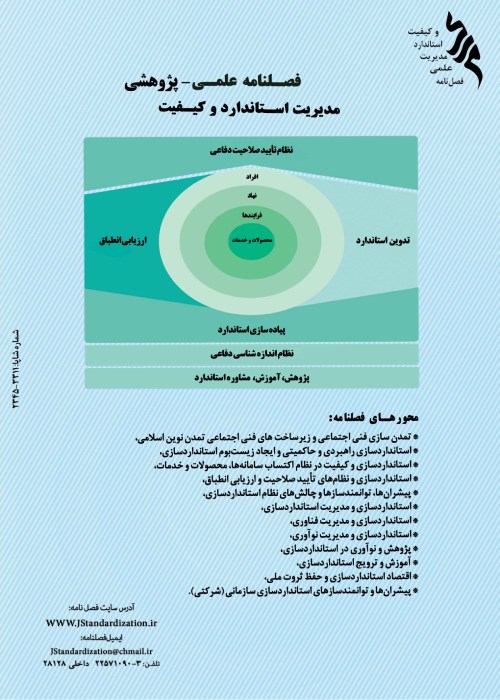Presenting and validating the model of sustainable creativity and entrepreneurship with emphasis on standardization (case study: home appliance manufacturing companies)
Sustainable entrepreneurship is a concept derived from sustainable development, which means the commitment of economic enterprises to continuous responsible behavior and preservation of natural resources for future generations. Therefore, the aim of the current research is to present and validate the model of creativity and sustainable entrepreneurship with an emphasis on standardization (case study: home appliance manufacturing companies). This research is applied in terms of purpose and descriptive-analytical. The research method is of a mixed type and has been carried out in two parts, quantitative and qualitative. The statistical population of this research in the qualitative section is the experts and executive managers of the home appliance industry, which were calculated using the snowball sampling method and the theoretical saturation point of 11 people. The data collection tool is the qualitative part of the semi-structured interview. The method of analysis of this part is using the data theory of the foundation. The results of this part of the research were explained in the form of six main categories and subcategories. Causal factors include organizational entrepreneurship, product development and competitive advantage. Background factors include government support, development infrastructure, and financial support for entrepreneurial ideas. Intervening factors include protective laws, sustainability categories and attention to labor force. The strategies include reforming laws, developing science and technology parks, and increasing the speed of capital circulation. Consequences include standardization of technology, development of technology and innovation ecosystem, and increase in productivity. Key factors include technology, idea generation, job creation and international competition. The quantitative part of the research was distributed with a researcher-made questionnaire tool derived from the qualitative model of the research after confirming the validity and reliability in the statistical population where the number of the statistical sample was estimated to be 213 people based on stratified random sampling. The path coefficients in the final model were estimated to be greater than 0.3 and the corresponding t-statistic was greater than 1.96 and were approved.
- حق عضویت دریافتی صرف حمایت از نشریات عضو و نگهداری، تکمیل و توسعه مگیران میشود.
- پرداخت حق اشتراک و دانلود مقالات اجازه بازنشر آن در سایر رسانههای چاپی و دیجیتال را به کاربر نمیدهد.


